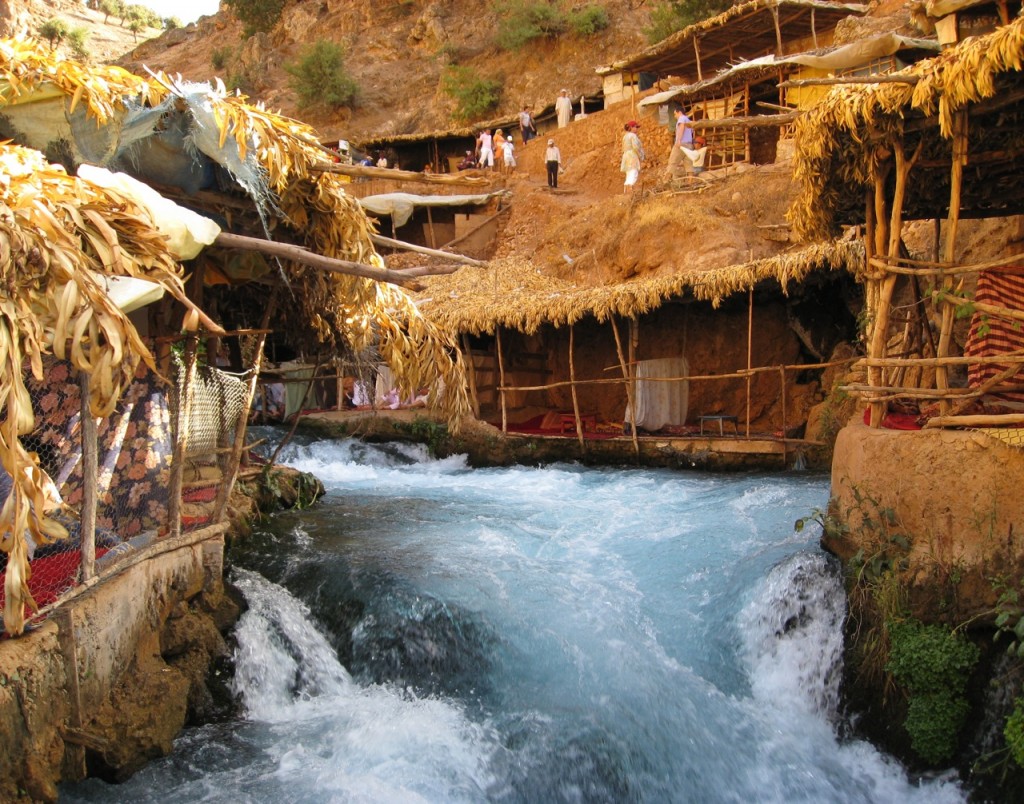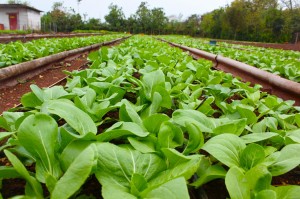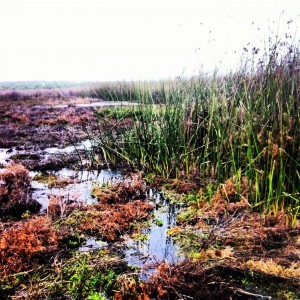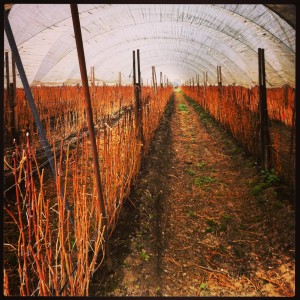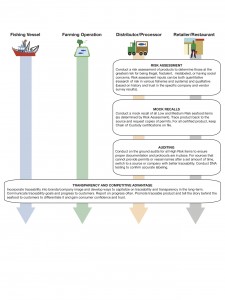Archive for the ‘MIIS’ Category
Urban Agriculture in Cuba – Organopónico Alamar
Agriculture in Cuba… I’d heard a lot about it, and done some research into before we left for our trip, but I still wasn’t too sure what to expect. I was imagining every little corner of the Havana covered in potted plants, with little courtyards overflowing with home grown veggies. While I saw some of that, I saw a lot more larger “urban” gardens than I’d imagined. The particular garden that we visited, Organopónico Vivero Alamar, I would considered it more of a “suburban farm” since it was on the outskirts of town and decent sized. More specifically the garden is now 11 hectares (~27 acres) , producing over 300,000 tons of produce a year for local residents. Founded in 1997, with just 5 employees, the farm employs 174 people and is now one of Havana’s largest and most successful urban gardens. In addition to selling fresh fruit and vegetables, the farm produced dried herbs, condiments and sauces, as well as compost and substrate for home gardeners.
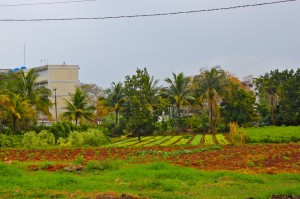 Nationally urban gardens account for well over 1.5 million tons of of produce sold every year (with some estimates closer to 3.5 million tons). Havana gets over 90% of their fresh produce from the many urban farms and gardens. Over 400,000 Cubans work in urban agriculture; almost all of it organic. While this is an impressive achievement, it came out of a difficult situation. When the Soviet Union collapsed in 1991, Cuba lost its major trading partner and entered into what is commonly known as the “Special Period.”Most notable for the agriculture sector, Cuba had severe shortages of gasoline, diesel, fertilizers and pestides. This forced a sustainable agriculture revolution as farmers went back to the basics, relying on permaculture techniques, natural pest control, and hands-on farming techniques. Alamar itself only has one small tractor for all 11 hectares of land, favoring oxen to both turn the land
Nationally urban gardens account for well over 1.5 million tons of of produce sold every year (with some estimates closer to 3.5 million tons). Havana gets over 90% of their fresh produce from the many urban farms and gardens. Over 400,000 Cubans work in urban agriculture; almost all of it organic. While this is an impressive achievement, it came out of a difficult situation. When the Soviet Union collapsed in 1991, Cuba lost its major trading partner and entered into what is commonly known as the “Special Period.”Most notable for the agriculture sector, Cuba had severe shortages of gasoline, diesel, fertilizers and pestides. This forced a sustainable agriculture revolution as farmers went back to the basics, relying on permaculture techniques, natural pest control, and hands-on farming techniques. Alamar itself only has one small tractor for all 11 hectares of land, favoring oxen to both turn the land 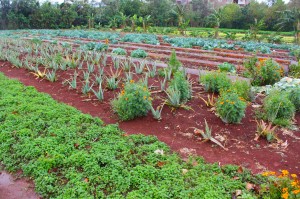 and produce nutrient rich manure. In total, using organic techniques keeps over 150 tons of pesticides and chemicals out of the earth, out of the supply chain, and away from humans.
and produce nutrient rich manure. In total, using organic techniques keeps over 150 tons of pesticides and chemicals out of the earth, out of the supply chain, and away from humans.
Even in Cuba you’re not safe from Monsanto. The garden manager that we spoke to spent a few minutes refuting all of Monsanto’s claims about why organic isn’t feasible on a large scale, from costs to efficiency to human resources. The short version is that Alamar boasts 40% profits, which would be difficult to do if they were paying for all the conventional inputs. These profit margins also allow them to keep their prices 10-20% below state prices.
Environmentally this is all great news, and really quite remarkable given what they’ve had to deal with and the limited resources available. Yet it is important to remember that they were granted use of the land permanently for free (with 3% of revenue paid to the government),
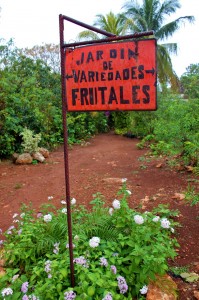 2which takes a major cost out of the equation. Their labor costs are also fixed outrageously low by the government, another major cost for most farmers. Again, the success they have achieved under the restrictions imposed is remarkable. Their philosophy of working with and supporting the land is much more sustainable than the attitude of the majority of US farmers who seem to want to get as much out of the land as possible, without giving anything back. I just hope that once the embargo/blockade lifts knowledge can flow more freely to and from Cuba, so that their methods of sustainable farming can persist for generations to come.
2which takes a major cost out of the equation. Their labor costs are also fixed outrageously low by the government, another major cost for most farmers. Again, the success they have achieved under the restrictions imposed is remarkable. Their philosophy of working with and supporting the land is much more sustainable than the attitude of the majority of US farmers who seem to want to get as much out of the land as possible, without giving anything back. I just hope that once the embargo/blockade lifts knowledge can flow more freely to and from Cuba, so that their methods of sustainable farming can persist for generations to come.
Alamar & Agriculture by the numbers:
11 hectares – area of Alamar
300,000 tons fresh produce grown by Alamar
174 people employed by Alamar
90% of employees live in the immediate community
90% of Havana’s fresh produce produced by urban gardens
60% of vegetables consumed by Cuban are local & organic
400,000 Cubans employed in agriculture nationally
150 million tons pesticides and chemicals NOT used
4 – 6 crop rotations per year
4 – 6 kg of organic matter inputs per sq meter
80% inputs produced at Alamar
Ag/Water Nexus
Lessons from the Central Coast
The Central Coast is home to some of the most productive agriculture land in the world, accounting for over $5 billion in direct economic output in 2011 in Monterey County alone. Yet it’s also a biodiversity hotspot, and home to the Monterey Bay Marine Sanctuary which attracts divers and vacationers from around the world. Water is a finite resource in this unique region, and affects many different stakeholders throughout the region. During our weekend workshop, we investigated some of the trade-off between agricultural productivity and environmental health, delved into watersheds, and talked a lot about water policy.
We also heard from some great guest speakers, including Karen Lowell who gave us a great overview of agriculture on the central valley. She also emphasized the human element of conservation, talking about the trust and credibility that has to be earned between partnerships before any progress can be made. As she so eloquently put it, “conservation is a conversation.” Lisa Lurie spoke with us about the Ag waiver, and different water quality issues in the Monterey Bay.
Sunday was mostly taken up by field trips. We checked out a wetland water treatment restoration project and learned about all the different policy hoops that have to be jumped through to create a project like that. From there we headed over to Driscoll’s where we spoke with Emily Paddock about some of the water initiatives that Driscoll’s is working on. We learned about managed aquifer recharge, which is important in their region, since their water basin is historically over-drafted.
DPMI
First things first… what’s with all the acronyms at MIIS? Oh man, I just used another one! Seriously though, the school has an acronym (MIIS), my degree has an acronym (IEP) and this cool program I did over my j-term has an acronym (DPMI). But what exactly does it mean? Well, I’m glad you asked… Development Project Management Institute. But what exactly does that mean?
Well, to quote the DPMI website “DPMI, is a professional certificate program that combines guided individual readings (completed prior to the commencement of class meetings), three weeks of intensive classroom instruction, and a personal reflection paper submitted three months after the conclusion of classroom work. The intensive DPMI training, organized as three separate modules, lasts three weeks: Managing Development Projects, Social Entrepreneurship and Strategic Partnering, and Facilitating Participatory Development.”
Which means for three straight weeks I was in a classroom from 9-5 learning new concepts and then turning around and immediately practicing how to use them. The first week we worked in “country teams” to develop an entire project design by going through the process of creating a problem tree and results framework for a specific problem in our target country. By the end of the week my Nepal team presented our proposed project, complete with strategic objectives, indicators, a sustainability plan and an exit strategy for improving maternal health in rural Nepal. The deliverables from the first week can be found on my dpmi website.
Week two was all about Social Enterprising, which meant that we formed groups around specific interests and then had to form partnerships between the groups. These matches weren’t all perfectly intuitive. My group was representing Rare Conservation, and ended up partnering with NDI (National Democratic Institute) and FSD (Foundation for Sustainable Development)–not necessarily a natural partnership. By the end of the week in these new, diverse partnerships we had come up with a proposal and presentation for the Rockefeller Foundation. Our meta-group proposed an innovative girls empowerment project that focused on environmental and health outcomes, with the girls as the drivers of change.
Facilitation was the heart of the third week. And what’s the best way to learn facilitation? By facilitating. Each day we learned new facilitation techniques and then immediately tried them out. We learned, and experienced, the importance of facilitating participation as part of a development plan. Facilitation is what brings all these ideas and projects together, and makes sure the local people are invested, interested, and willing to carry the project forward.
Overall it was a very intense three weeks, but the respected practitioners that taught the course and the diversity within my peers ensured it was a rich and rewarding learning experience.
Without a Trace…
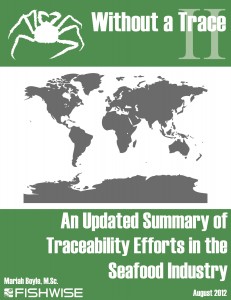 It’s officially here! All my hard work this summer has come together in one report that was printed and announced yesterday! Without a Trace II: An Updated Summary of Traceability Efforts in the Seafood Industry can be downloaded using that link or on this page.
It’s officially here! All my hard work this summer has come together in one report that was printed and announced yesterday! Without a Trace II: An Updated Summary of Traceability Efforts in the Seafood Industry can be downloaded using that link or on this page.
It’s an expanded (50 pages, to be exact) version of the original report, that summarizes everything from the history of seafood traceability, to the laws and international agreements that pertain to traceability, to why seafood traceability is so important in the first place. It also has a long list of seafood certification companies, traceability companies, DNA testing companies, nonprofits and industry groups that work in seafood traceability, with summaries about what each group is working on. There’s a list of all the current IUU blacklists, as well as pages of useful links, references and contact information for all of the organizations mentioned. The paper wraps up with suggested next steps for both seafood business and the traceability movement as a whole.
So why is seafood traceability so important?

Supply Chain including subsistence fishing, wild capture fisheries, aquaculture, recreation fishing and processing & distribution.
Historically seafood traceability was important for food safety, specifically being able to trace back food-borne illness outbreaks to the origin. Now, it’s also important for cases of fraud, as mislabeling rates can be as high as 60%, depending on the region and type of fish. IUU fishing is a global problem, with economic losses from $10-23.5 billion, which represents 11-26 million tons of seafood a year. The illegal fishing industry is also rife with human rights violations, due to the lack of transparency and accountability. Traceability assures that the seafood you’re eating was not sourced illegally, and is free of human rights violations. In addition, traceability can help prove the sustainability of the system as well as be a marketing tool for knowledgeable consumers.
The case for traceability is growing and gaining momentum every day. While the challenges to setting up 100% traceable supply chains are major–geography, technology, business being the biggest areas–the rewards are great, and the industry is heading that direction. This paper is a great resource for those interested in seafood traceability, industry members and those looking for next steps in their business.
The two pages below are the different recommendations for different sectors of the fishing industry, including fishing vessels, aquaculture, processing & distribution, and retailers & restaurants.
Blogging Away
Another blog, this time about the 30th session of COFI and a new award aimed at deterring Illegal, Unregulated and Unreported Fishing.
Guest blogger for FishWise
I wrote a guest post for the FishWise blog!
My post was a review of the journal article entitled “Global Cooperation among Diverse Organizations to Reduce Illegal Fishing in the Southern Ocean.” As it turns out, collaboration between diverse organizations can go a long way toward addressing international governance issues. In fact, the authors ended by saying that this one case study shows that international environmental issues don’t necessarily depend of the creation of new governmental regimes, they can be addressed through existing organizational networks.
The graph below is from the article and shows the weight of tooth fish caught by IUU fishing in the Southern Ocean between 1995 and 2009.
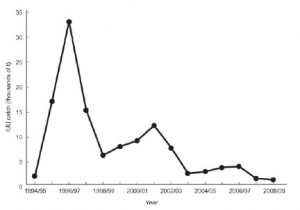
Link: http://www.fishwise.org/press/blog/141-reducing-illegal-unregulated-and-unreported-iuu-fishing
FishWise
So what exactly is FishWise? And more importantly why would someone want to be fish wise?

According to their website “FishWise is non-profit organization that promotes the health and recovery of ocean ecosystems by providing innovative market-based tools to the seafood industry.” In normal English, that means that FishWise works with seafood businesses to help them improve their traceability systems. They can also conduct risk assessments to identify products that are likely to be untraceable or coming from illegal sources. They work with companies like Target, Safeway, New Leaf and Bi-Rite to help them publicly communicate their commitment to sustainability and transparency, and improve their product mix over time.
So why would someone want to be fish wise? So that you can be certain the fish you’re enjoying contributes to the well being of the worlds ocean, instead of depleting it.
In the office

Just another day in the office…
My favorite thing about the FishWise offices (other than it’s proximity to the beach) is that it’s full of plants! While the angle of this shot doesn’t quite capture that, from where I’m sitting right now I see no less than 12 plants in this part of the office alone.
You are currently browsing the archives for the MIIS category.

